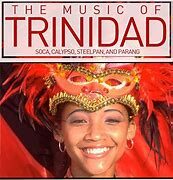This form of musical expression was originated in Trinidad and Tobago in the mid to late 19th century. It then spread to the rest of the caribbean and Venezuela by the mid nineteenth century. During British colonial rule in the 1800’s, hand drums were used as a method of communication for the local gangs. Bamboo sticks, which were used to pound on the ground during parades and ceremonies, and other objects including the drums were banned by the authorities due to the rise in violence. The locals were forced to find alternate objects to create music. They eventually formed “Iron Bands” with garbage can lids, old car parts and empty oil barrels. Calypso is rooted in traditions developed by West Indian slaves brought to the caribbean. A calypso song is usually about a current event, social commentary, praise, satire or lament. It is a mixture of African and East Indian rhythms and hooks. A performer known as a “Chantwell” or “Griot”, originally sang French Creole until English became the dominant language in Trinidad and Tobago. The sounds of Calypso and Soca are characterized by the Steele Pan. In the 1930’s it was discovered that a dented section of an oil barrel produced a particular tone. Calypso tunes are not harmonically complicated; they have a walking baseline although sometimes they contain fills. Chords are usually simple triads and grooves are often felt as 2/4 but are written both as 4/4 and 2/4. In the early years, Trinidadian musicians Rupert Grant (Lord Invader), Aldwyn Roberts (Lord Kitchener), Egbert Moore (Lord Beginner) and Omni Mundle (Lord Composer), were the most outstanding. The genre became widely popular outside the caribbean in the 50’s and 60’s, partly due to the success of Jamaican musician, composer and actor Harry Belafonte. Both Belafonte and Mundle (Lord Composer), played Mento, which was the precursor to Calypso. In the 1970’s Garfield Blackman aka Lord Shorty, invented Soca. This sub genre, defined as ” The Soul of Calypso”, has a faster tempo, a heavier beat with a “four on the floor” pattern and a more syncopated baseline. Lord Shorty played Steel Band as a child, progressed into Calypso then invented Soca. He was actually trying to revive traditional Calypso since it was no longer popular with the younger generations in Trinidad. This was due to the rise of Reggae in Jamaica and Soul and Funk in the U.S. Calypso instruments include a drum set, latin percussion (bongos, congos, and timbales), bass guitar, acoustic or electric guitar, trumpets, trombones, saxophones, multiple vocalists, and of course the Steel Pan. Over many years Steel Drum makers have perfected the quality, tone and appearance of the instrument. It is now fully accepted in the present day family of percussion instruments.
The Woodstock Music and art festival





